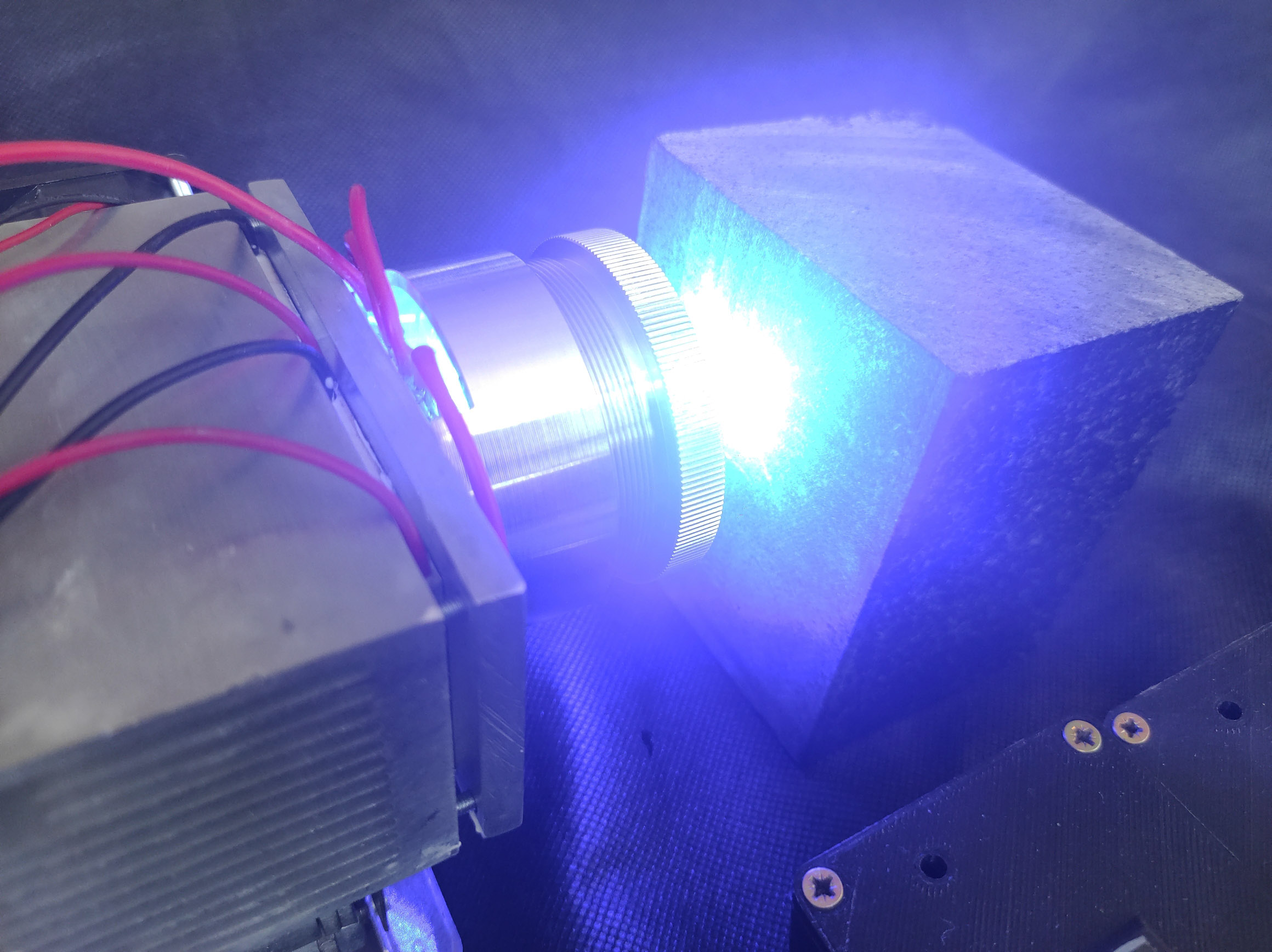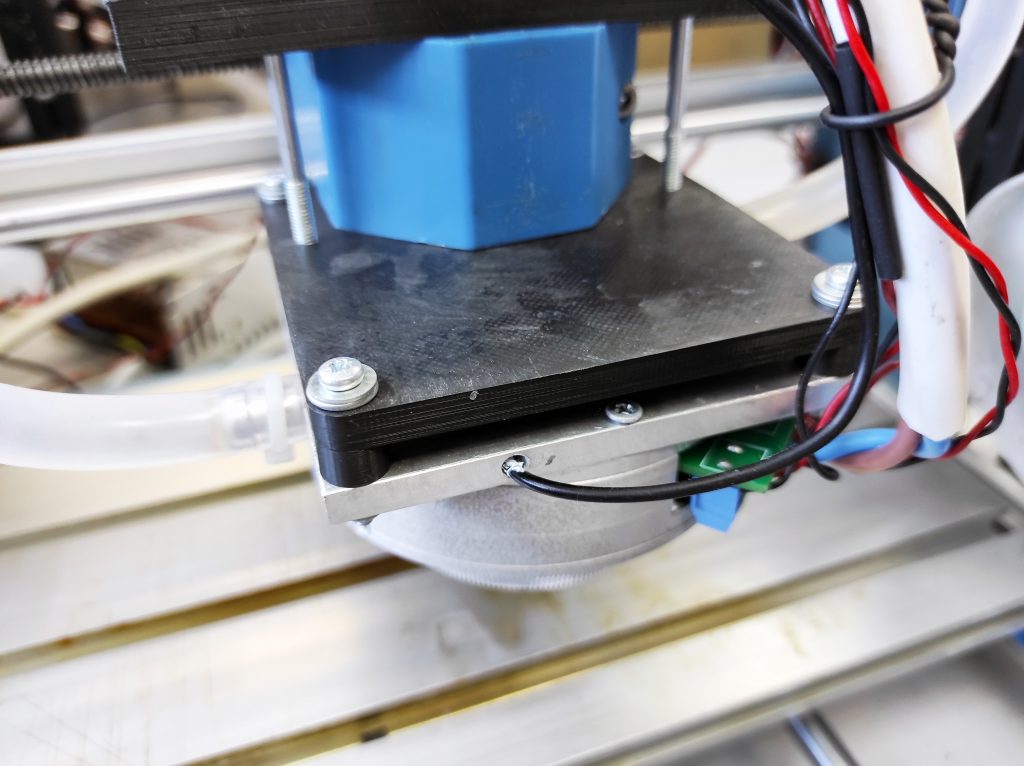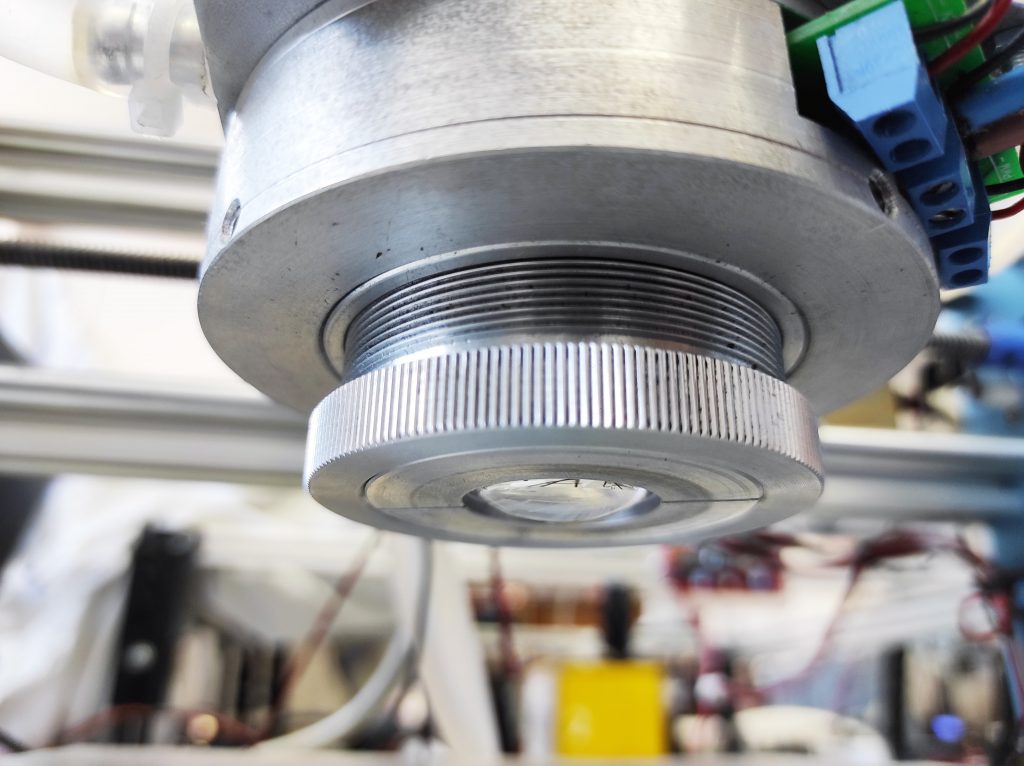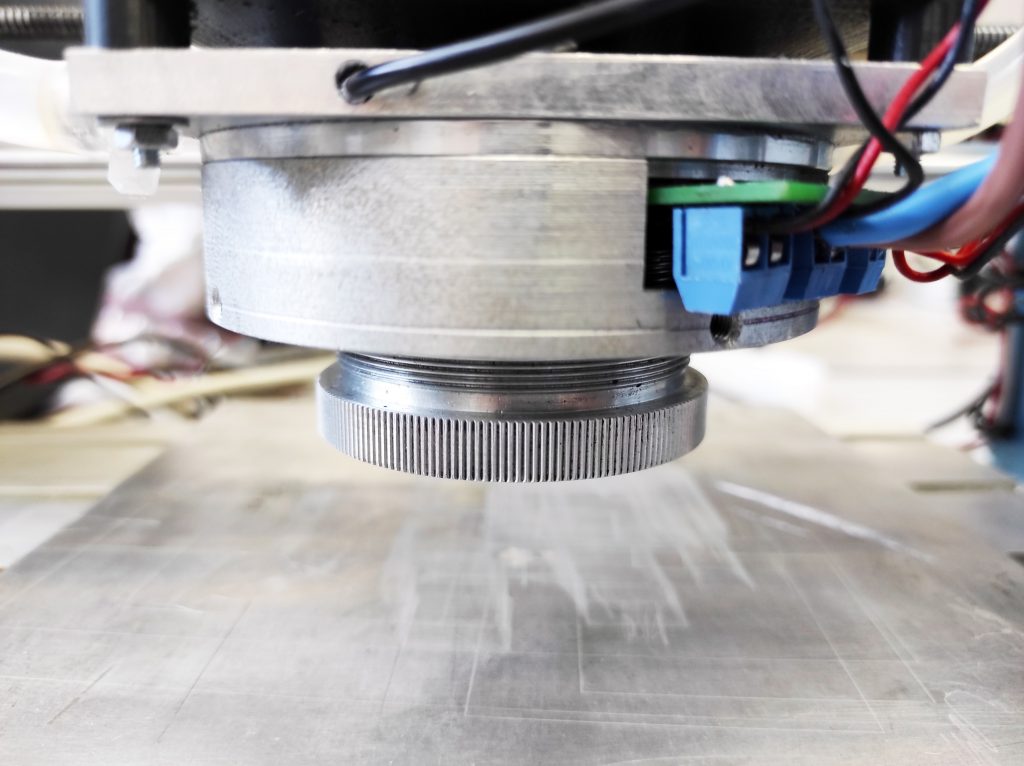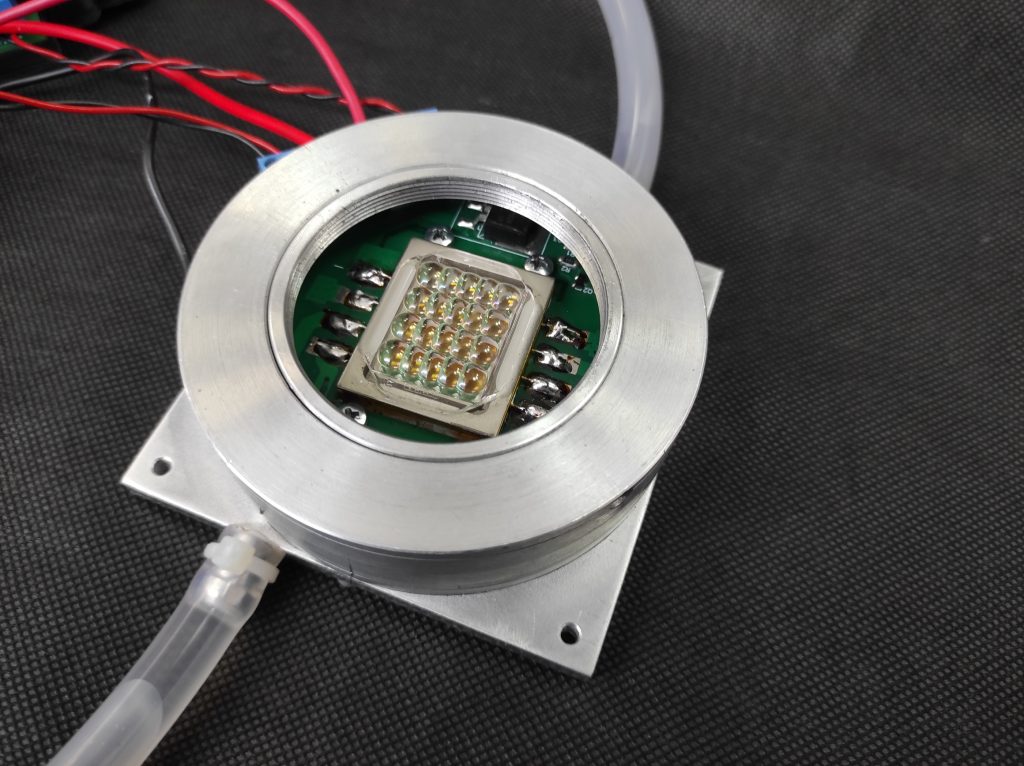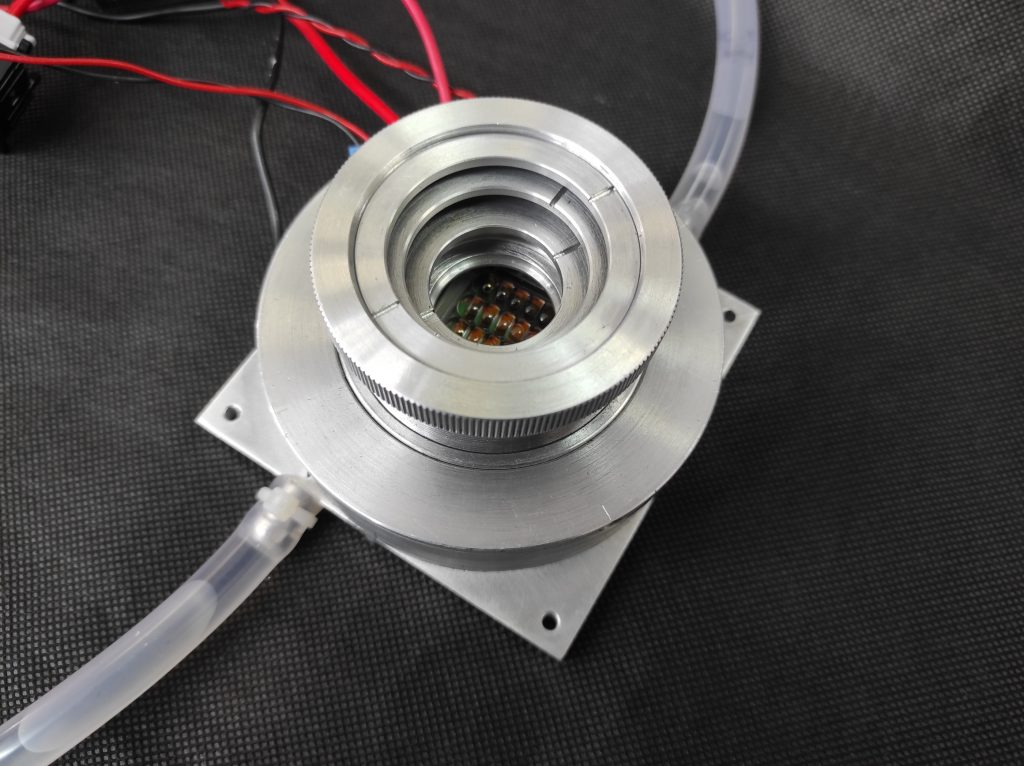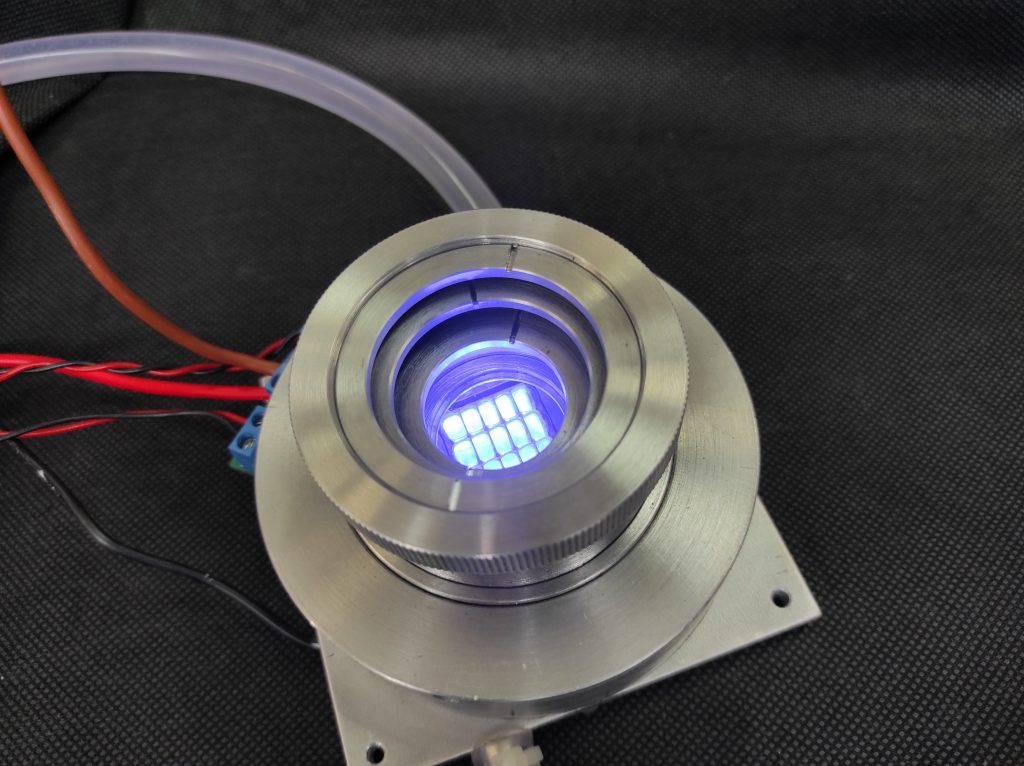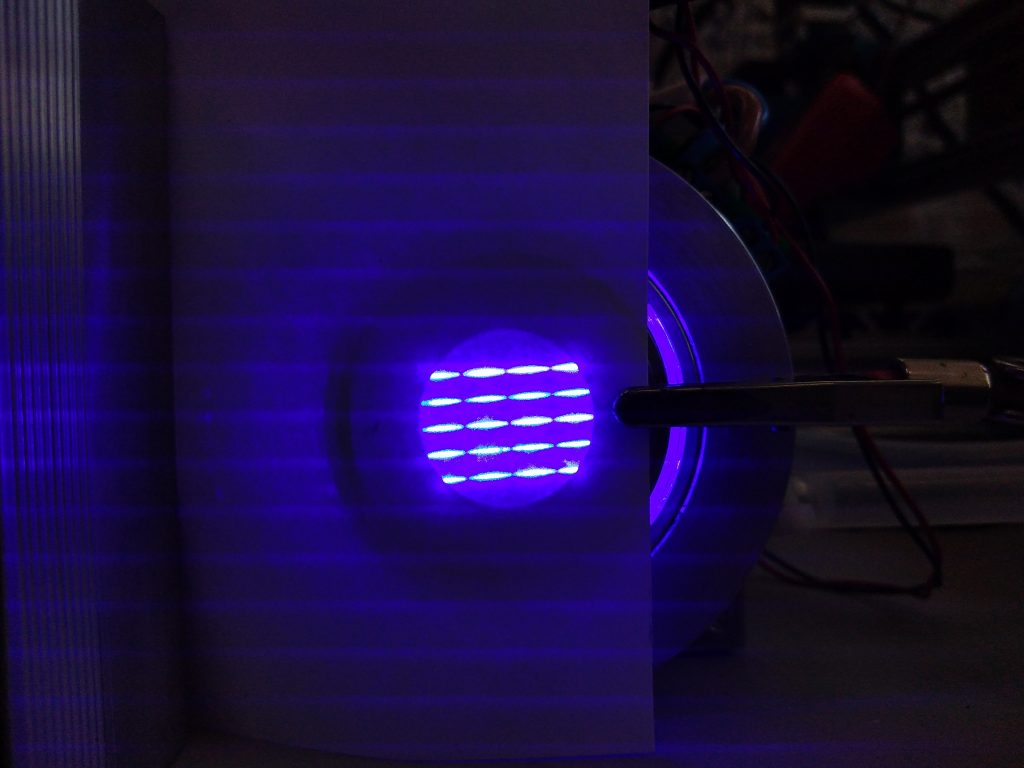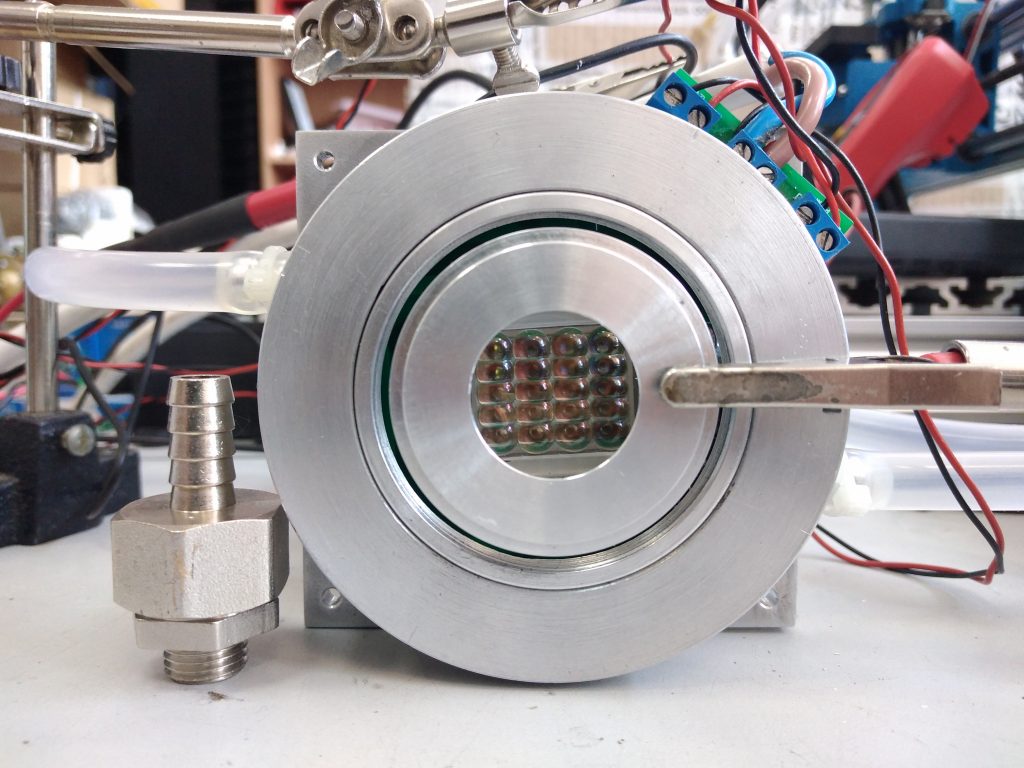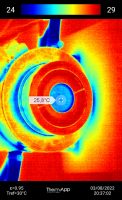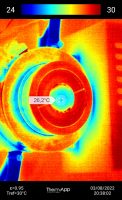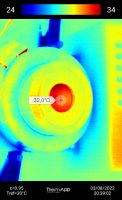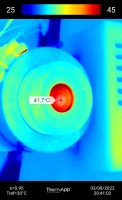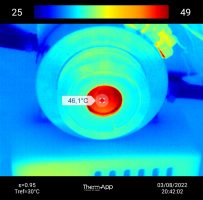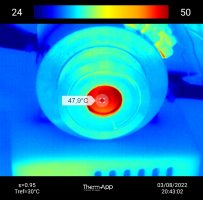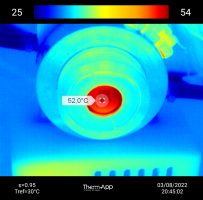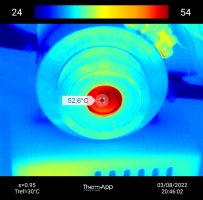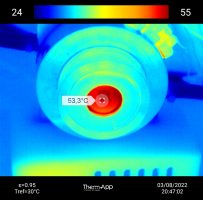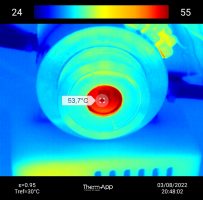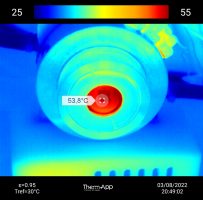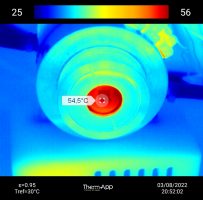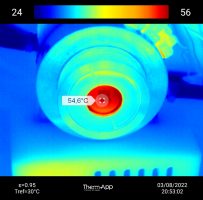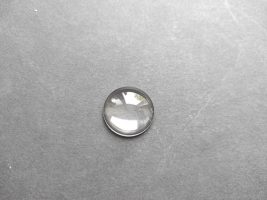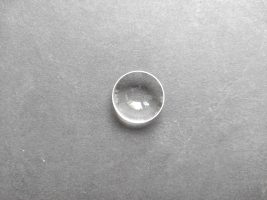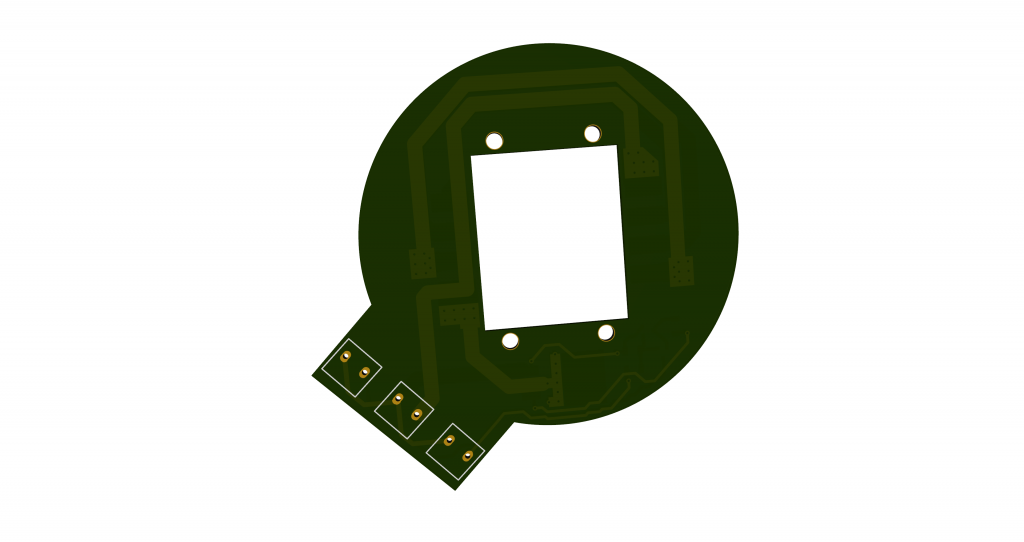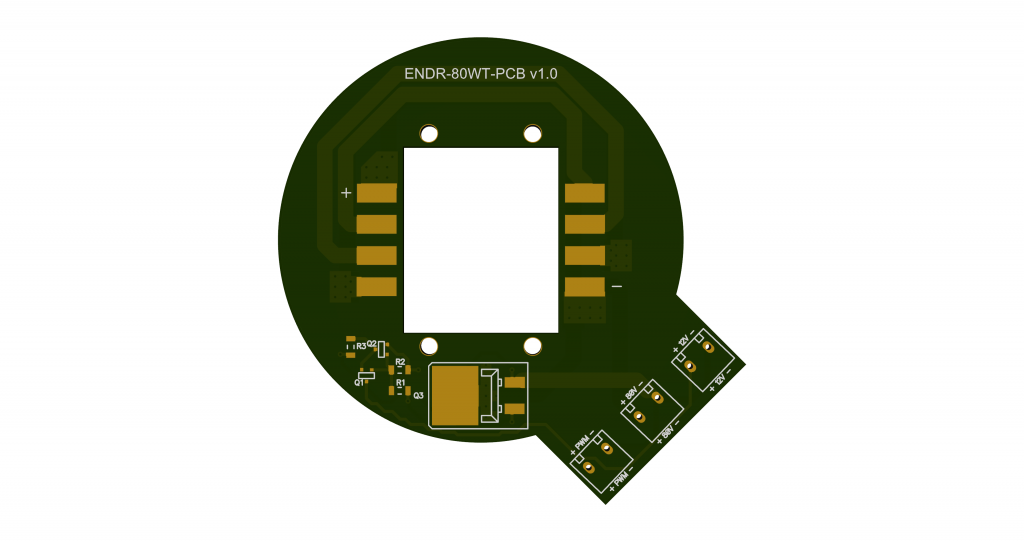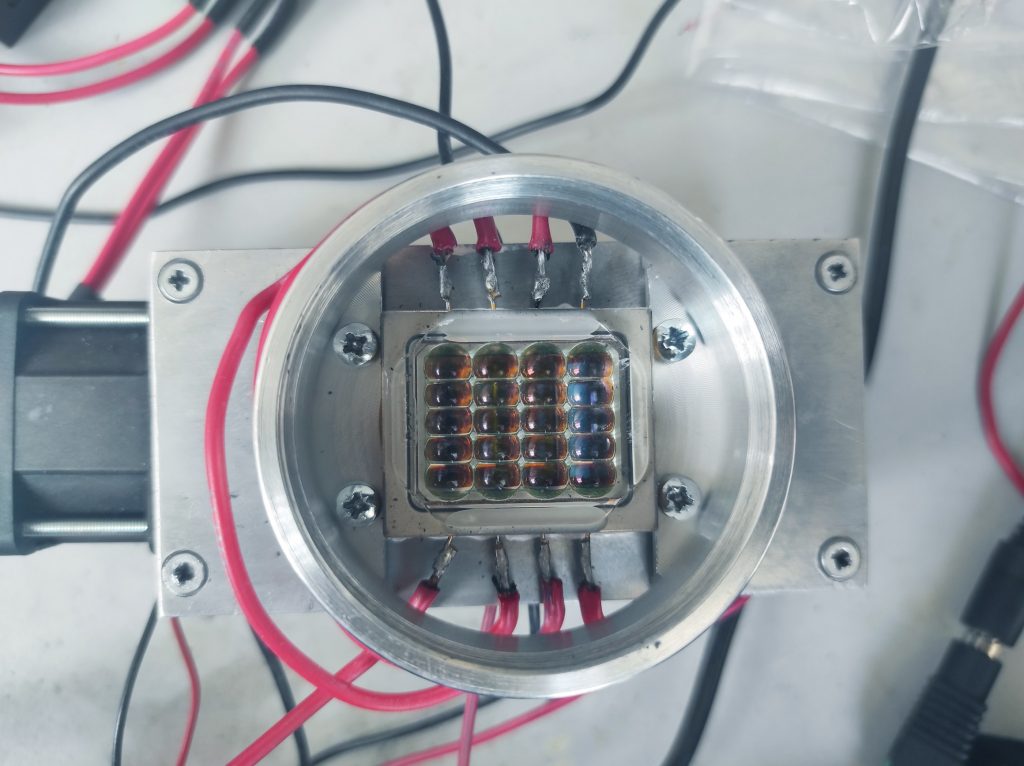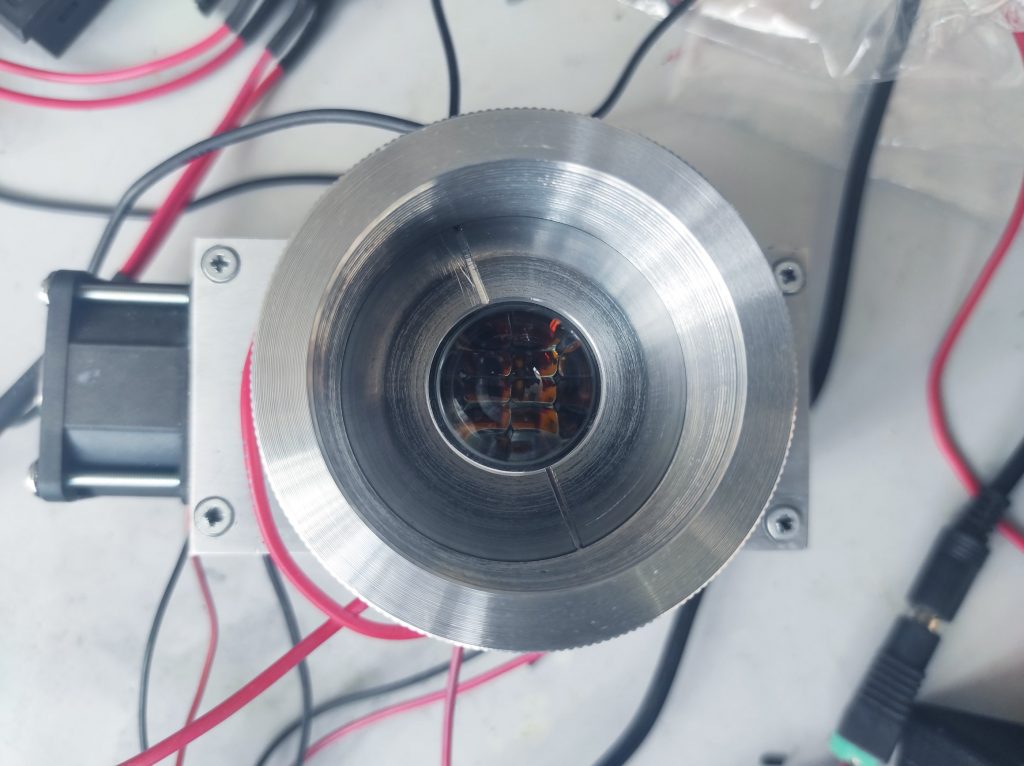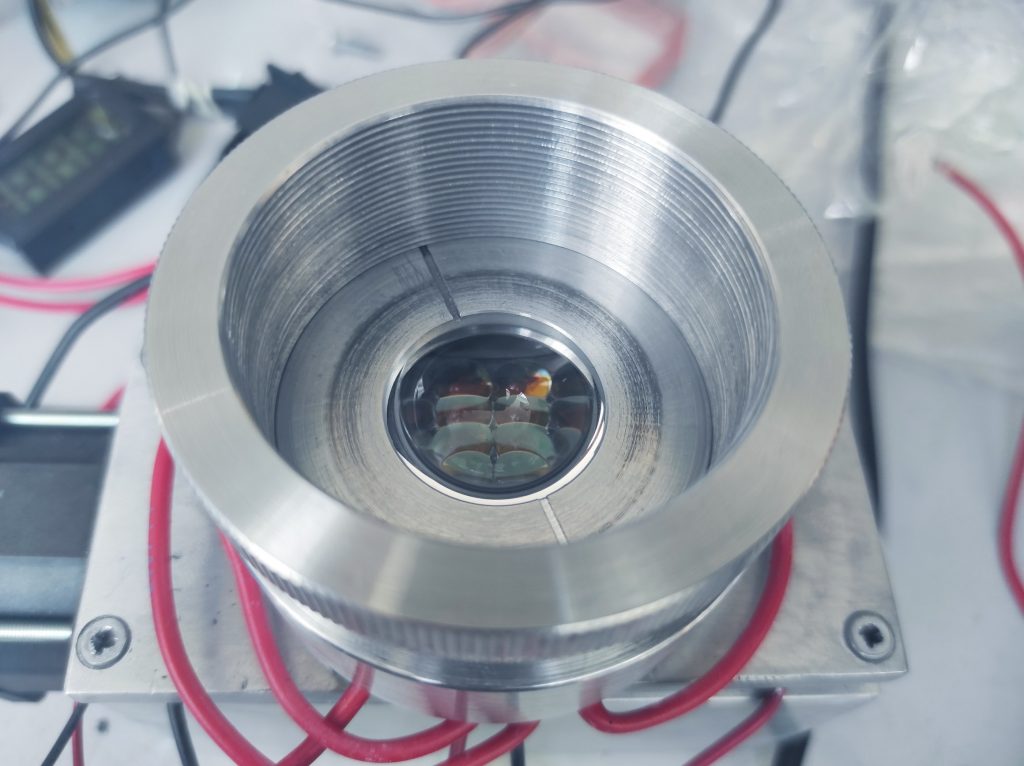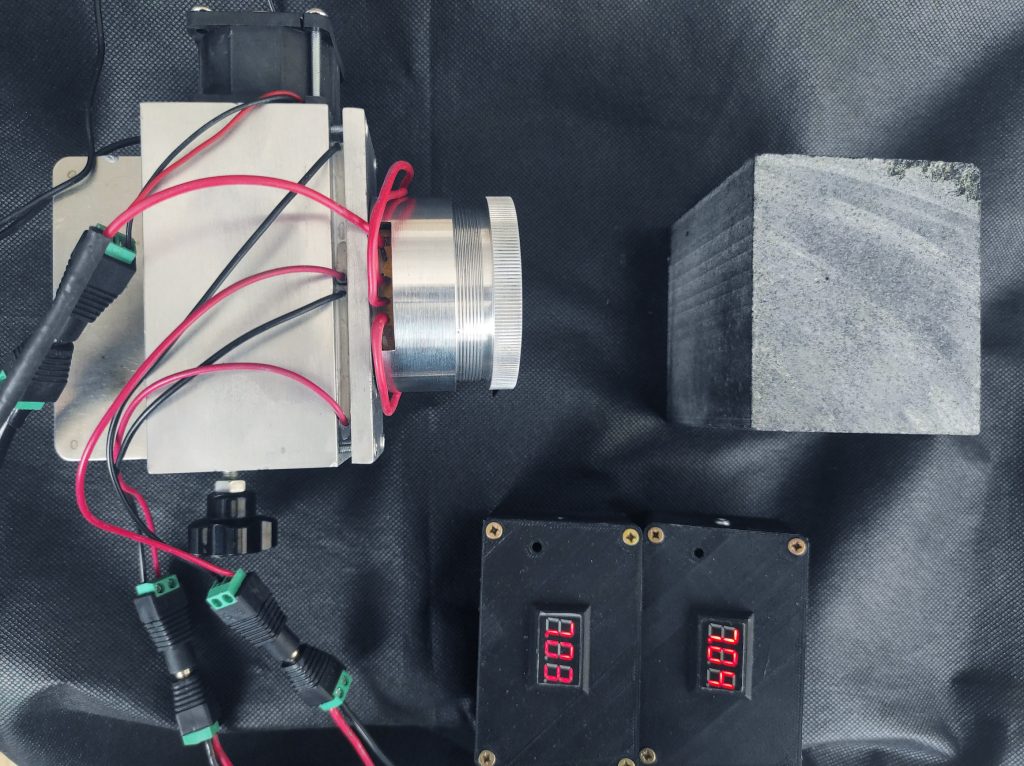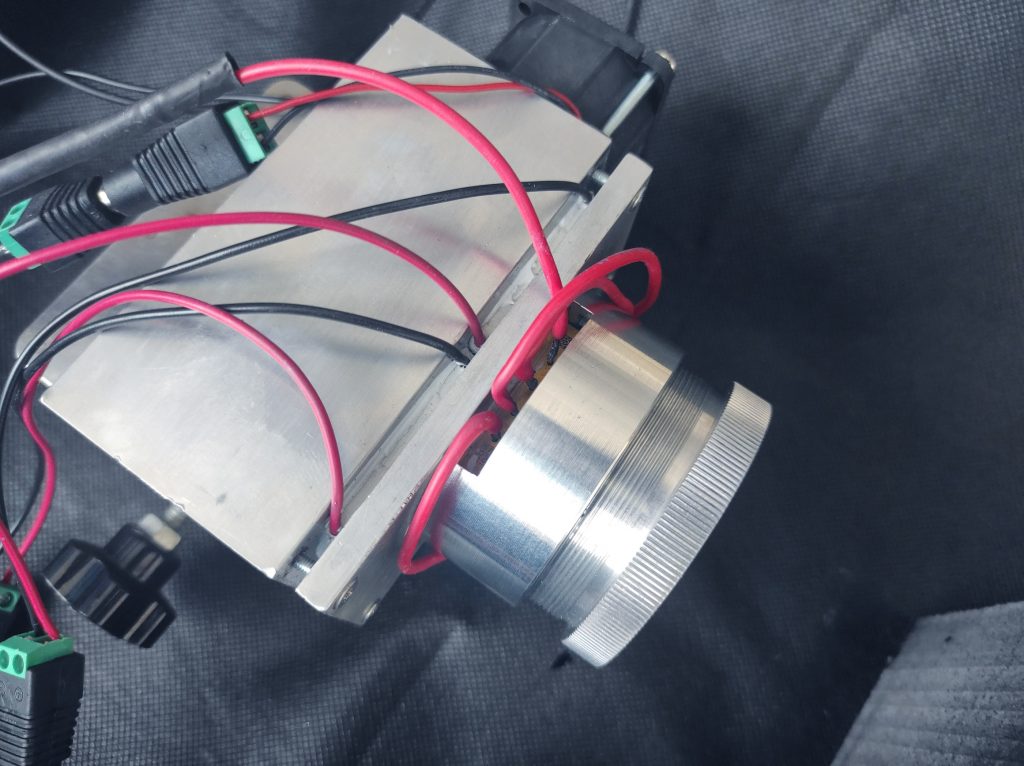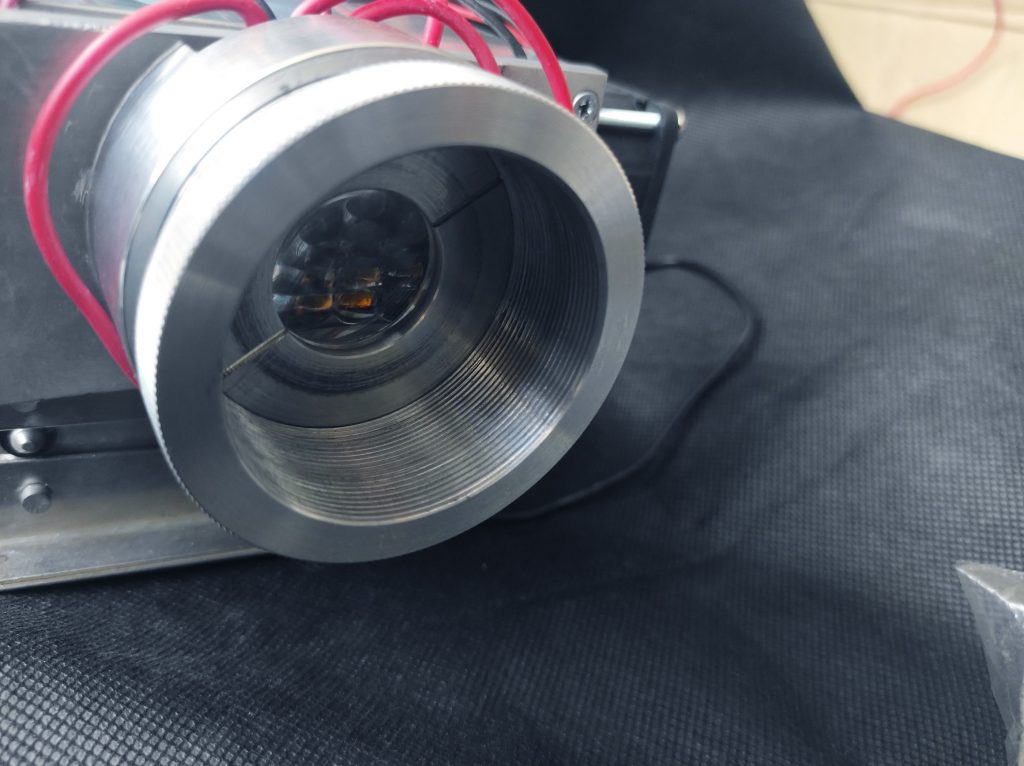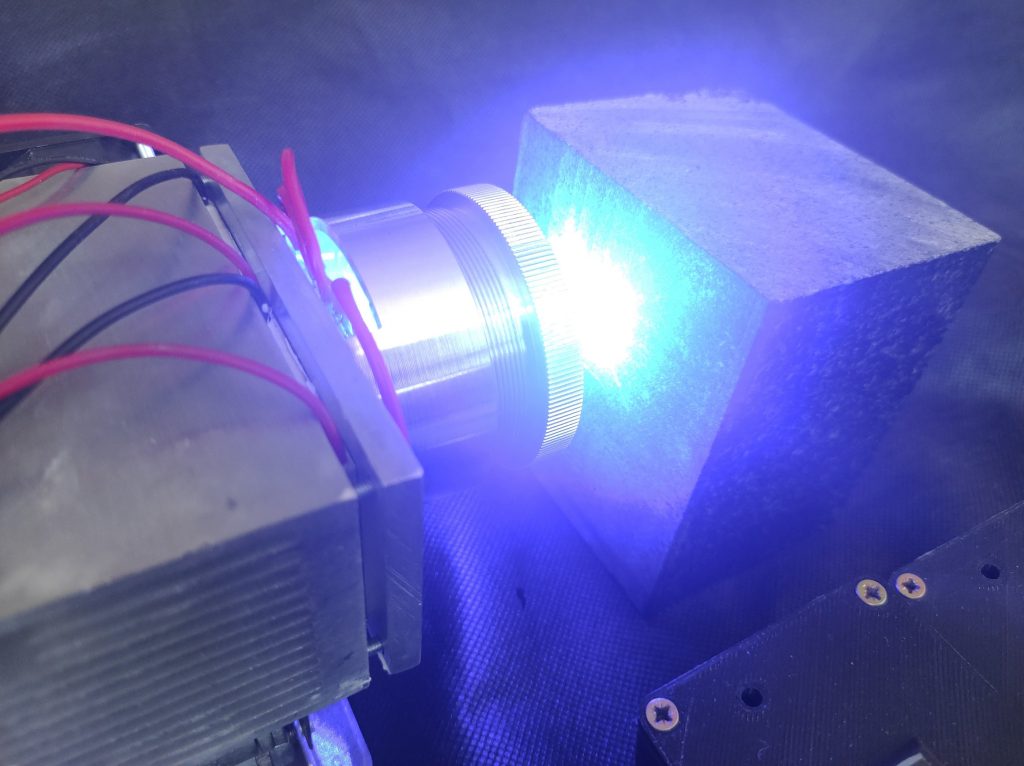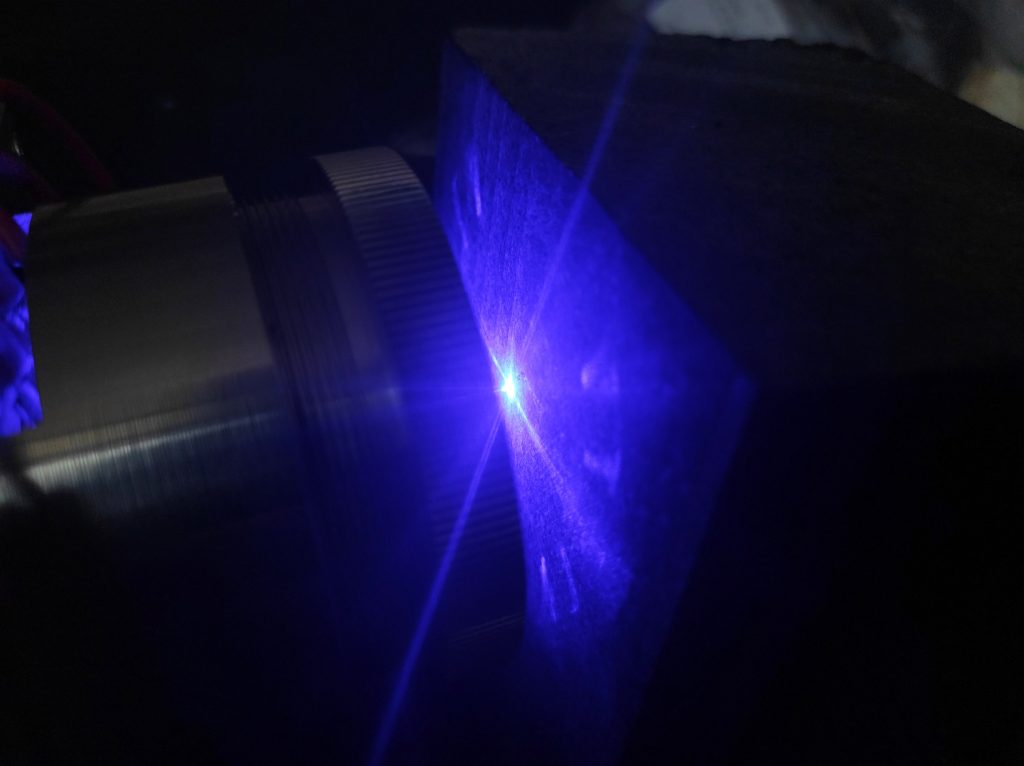NICHIA laser diodes array – datasheet settings, parameters for NUBM31/NUBM31T.
Endurance has started to work on a new 85-watt laser module using NICHIA NUBM31 / NUBM31T laser diode array.
An Endurance 85 watt diode array laser module: 445 nm blue NUBM31/31T by NICHIA
Testing water colling system stability
Endurance custom lens for NUBM31/31T LD array
New special lenses for high-power diode multi-laser modules. Material: pure quartz.
Diameter 25.2mm
Thickness 7mm
Radius of curvature +17 mm/plane, focus – 37 mm.
85 watt NUBM31/31T NICHIA laser – first launch
The powerful 85W NICHIA NUBM31 85 was used for testing and improving the laser. This technology has been used in the past to deliver some of the most powerful lasers on the market.
A good diode laser will have the ability to run at high power and remain stable at high temperatures. Upon testing, the NICHIA NUMB31 85watt the noticeable strength and power can be seen. The performance of the interconnected components is essential for long operating hours without overheating or malfunctioning.
When the laser is powered on you will see an array of light that makes up the beam coming from the laser. In this video demonstration, we can see that when focused the focal range changes from an array of spread laser beams to a concentrated light on one spot. All the array of beams become focused onto one spot.
Setting up a focusing system (alpha testing) for a NICHIA NUBM31 85 watt diode laser array – YouTube
The laser has two lenses in the exterior front for this test to achieve the focal range. The lenses will double the optical power.
A good laser driver is a vital component for the laser lifetime. A high-quality laser driver can stabilize current and maintain constant values of the current and voltage going directly to the diode.
Control board schematic
The control board to run 85-120 watt laser diode array. The key ability is to turn on / off and, if the power supply allows it, then adjust the duty cycle.
First launch (testing optics) – different types of lenses
Universal optical system. Compatible with all types of lens: F=30 / 40 / 50 mm.
Possibility to install 2x F=30 lens and get a double laser optical power.
NICHIA NUBM31/NUBM31T optics holder
Initial laser beam parameters for NICHIA NUBM31/NUBM31T:
- Beam divergence: 15 mRad
- Aperture: 30 mm
- Laser beam spot: 1 mm
- Focal depth: 1.5 mm
- AR coating: 405-455 nm
Projected optical system for NICHIA NUBM31/NUBM31T:
- Material: BK 7
- Laser lens diameter: 1-2”
- Laser lens focus: 30-50 mm
- Luminosity: 1:1
Optical system calculations (case study)
The projected laser beam spot and a focal depth
| Laser beam spot in mm | Max power density: kW / Cm^2 | Focal depth in mm. |
| 0.2 x 0.4 | 91 | 19.43-20.57 |
| 0.16 x 0.3 | 34 | 5.7-8.4 |
| 0.16 x 0.33 | 151 | 15.26-15.95 |
| 0.16 x 26 | 27 | 0-0.5 |
| 0.10 x 0.21 | 345 | 10.15-10.45 |
Examples of pictures of spots obtained in the calculation:
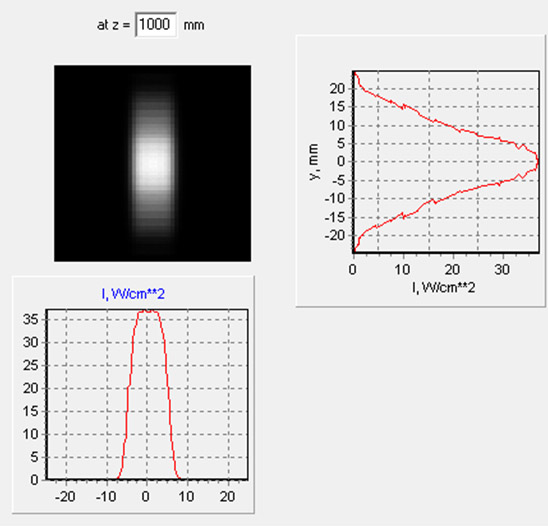
This is the focal spot of an ideal lens with F = 1000 mm. Frame size 50 x 50 mm. The graphs show the intensity distributions in a spot (in W / cm2) along the horizontal and vertical axes passing through the center of the spot.
When focusing with an ideal lens, the shape of the spot in focus does not change, only its size changes. For example, a spot in the focus of an ideal lens with F = 25 mm:
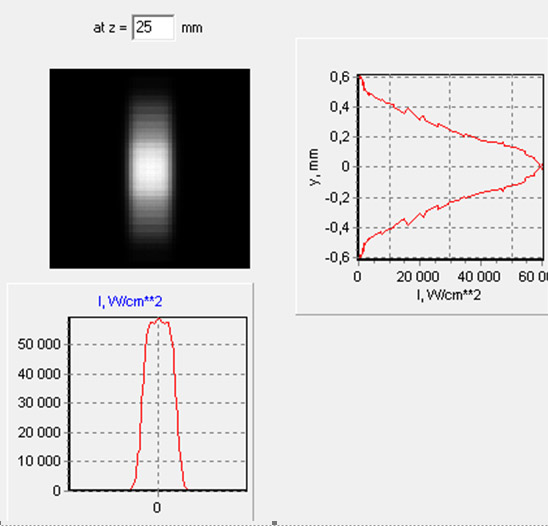
Here the frame size is 1.25 x 1.25 mm.
But when focusing with a real lens, due to aberrations, the shape of the spot also changes. This is how the spot looks when focusing with a single plano-convex lens with F = 25 mm:
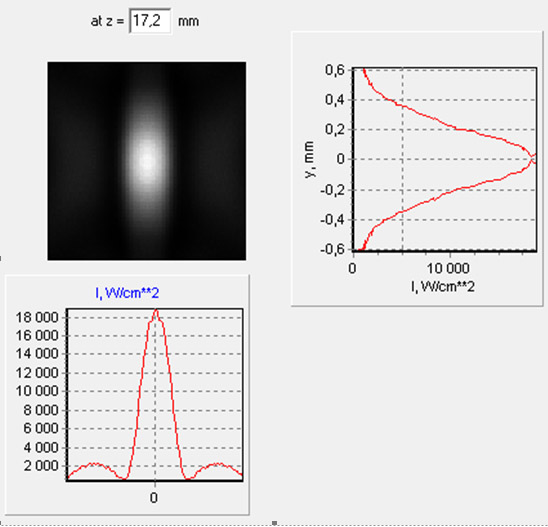
The size of the frame is the same 1.25 x 1.25 mm. It can be seen that the widths of the peaks changed slightly, but the distant wings appeared. For reference: now only 42% of the power emitted by the diode gets inside the 1.25 x 1.25 mm frame, while with an ideal lens, 97% of the power falls into the same frame. True, an ideal lens is considered ideal in every sense, i.e. it is believed that it does not introduce losses into the beam, while a real lens is assumed not to be anti-coated, which means that about 8%, or a little more, is lost due to reflection on its surfaces.
Optical lenses
Testing different lenses. BK7 glass does not work because of high power
We plan to use lenses made of fused quartz, brand KU or KV.
Cooling system
water-cooled
Electronics and control board
PWM + Dynamic PWM
NICHIA NUBM31 / NUBM31T diode array system datasheet

Other modules like NUBM36 / NUBM34 are on our watch list…
The 85W power is a great ability for laser diodes. Upon testing the 85W laser, the power that is emitted is immense. The utilization with Endurance lasers can be used in many industries and other applications.
